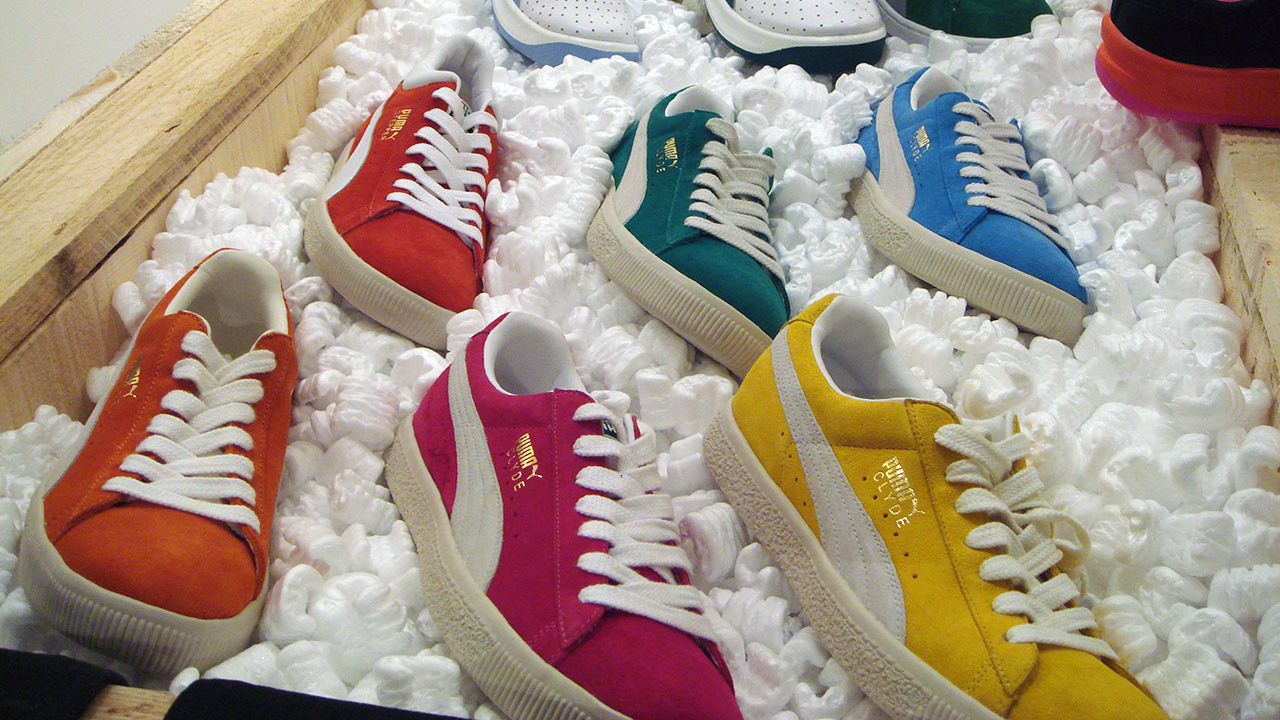Puma sneakers — once a hot, kill-for commodity inside the walls of Rikers — are now so bland that they’re the only footwear allowed into the jail from the outside world. Ratter writer Justine Sharrock chronicled the 180-degree shift in attitude, and presents some theories for how it happened.
In the ’80s, Pumas were the “Rolls Royce of sneakers”:
“If you came in with Pumas on, you were going to be a target,” says Jerry Fields, the author of The Bad Boys Chronicles: Memoirs of the Making and Unmaking of an Ex-Bank Robber. He should know: during his stint at Rikers in 1981, two fellow inmates threatened Fields—your Pumas or else. “People would fight over shoes and Pumas were the main thing that other inmates were going after,” Field says by phone. “Pumas were the top of the line, the Rolls Royce of sneakers.”
Fields enlisted another inmate, who was serving time for gang-related homicide, to get his back. To be stripped of his shoes wasn’t an option: Inside, they were an essential vestige of status. To men stripped of their jewelry, watches and other effects, their sneakers — Pumas in particular — were king.
But no longer:
A generation later, the only outside sneaker allowed at Rikers are black and white Pumas. When inmates arrive, they receive standard-issue lace-free shoes — a.k.a. Obamas (the black ones) or Pradas (the orange ones) — which regularly fall apart within a month. They tend not to fit well and are dangerously slippery. People are allowed one pair of personal shoes, usually mailed from the outside. Having those sneakers is a big deal.
The New York Department of Corrections (DOC) bans certain sneaker brands for what it claims are “security reasons.” The DOC refused to elaborate — or answer any other questions — but the message remains, that uniformity in sneakers has become part of the safety strategy. And those sneakers, it turns out, must be Pumas.
It’s not immediately clear why this is the case, but experts suggest a few reasons: One, Pumas don’t have material that could be weaponized, or spaces that could be used to smuggle in contraband; Two, they don’t have status symbols of status or insignia, like other shoes do:
“It is highly likely that they have less affiliation with gangs or status than the other brands,” says Elliott Curtis, co-founder of Sneakerology, the world’s first college-accredited class dedicated to sneaker culture, at Carnegie Mellon University. “Puma doesn’t have the status of Nike and Jordan. Put it this way, nobody is camping out for the chance to buy a pair of Pumas like they regularly do for Nike and Jordan. But to my knowledge nobody is being made fun of for wearing Pumas either.”
While the DOC has been able to clamp down things like jewelry, clothes and tattoos, which are often used to “indicate stature or gang affiliation,” shoes posed a unique problem because they are “one of the few goods that inmates need, and that are costly and difficult to supply,” Sharrock explained. The DOC tried banning all shoes and issuing their own (it proved to be costly, the shoes fell apart in weeks, and it wasn’t shown to have a strong effect on inmate violence), and then attempted to ban specific styles of specific shoes — which just generated confusion across departments. Recently, and unofficially, it seems that they’ve arrived at Pumas as the answer:
The Pumas-only approach, oddly, might be the answer. They have less gang affiliation, and aren’t hot commodities. “It’s the kind of same concept” as an all-out ban, says [former DOC Chief of Staff John] Picciano, when I asked him whether he thinks it could work. “It provides uniformity.”
The DOC forbids Converse All-Stars high tops, New Balance, Nike and Adidas. It does not specify the Pumas-only rule — in fact, the rule’s official status is murky. The DOC denied its existence, but call the inmate information line for clarification, and you’re told that if you bring in or mail non-Puma shoes, they’ll be turned away.
(Photo: Bucky Turco/ANIMALNewYork)


